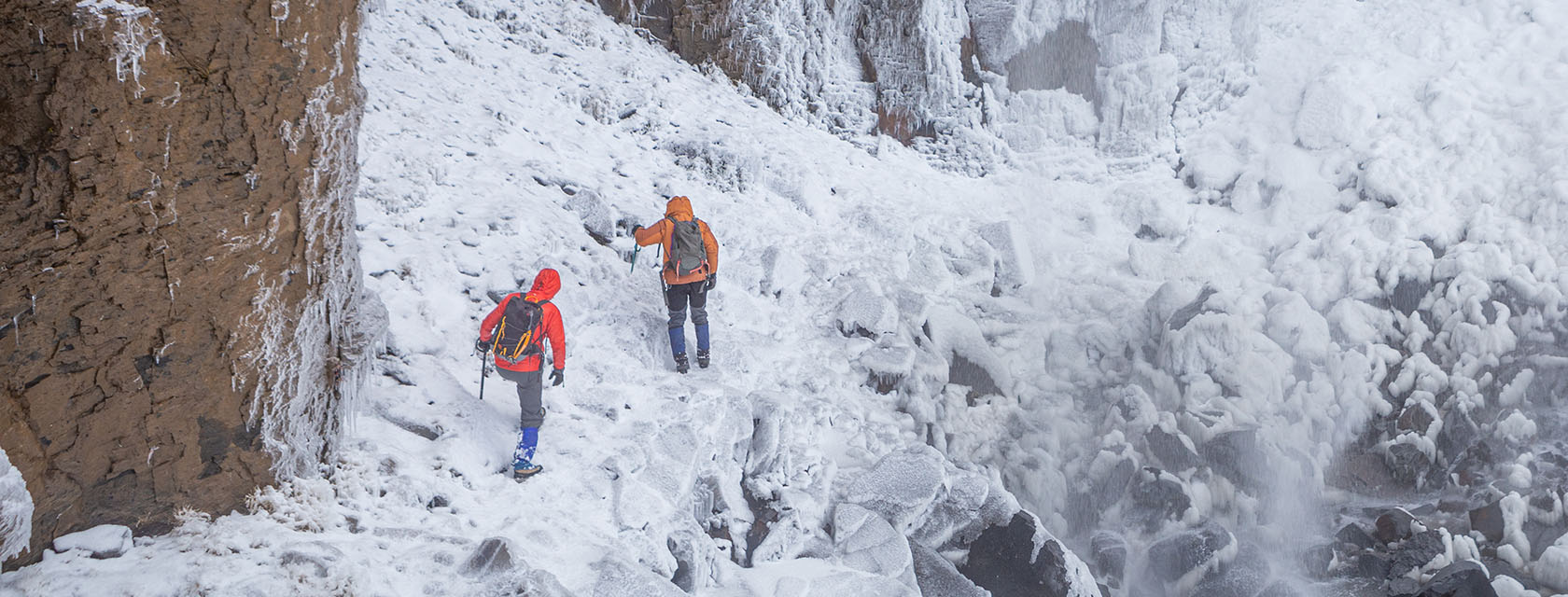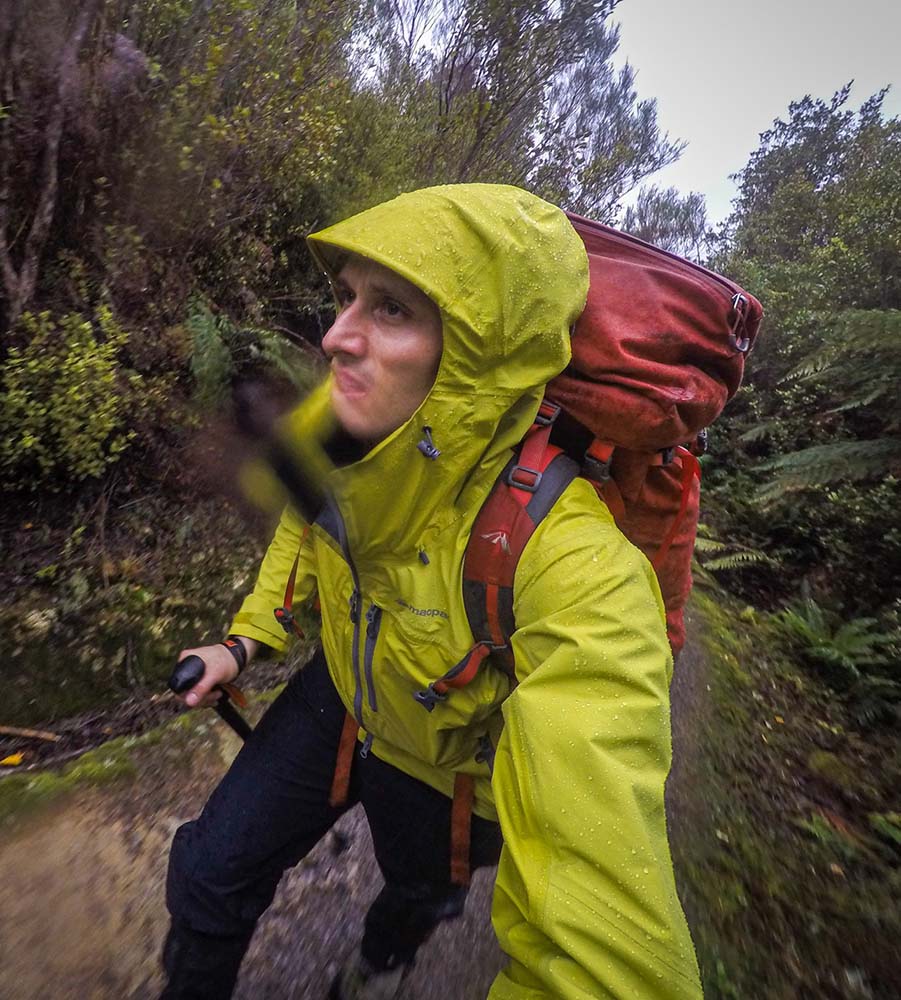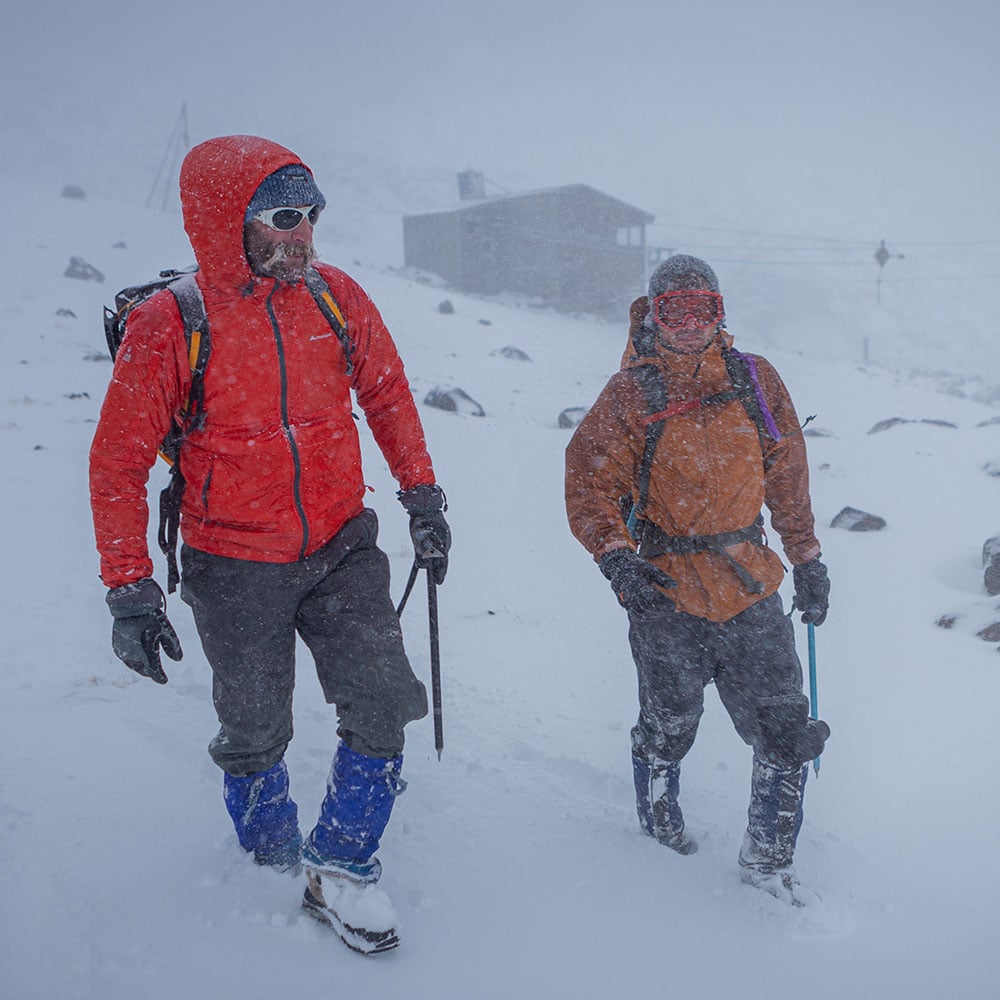
deciding when to turn back
Nick Allen is a SCARPA and Black Diamond Brand Ambassador. He is a climber and hiker and pursues these activities while navigating the challenges of living with neurological disease and Fibromyalgia. He shares his insights on Heuristic Traps and deciding when to turn back on a trip.
When it comes to outdoor activities in New Zealand's alpine environment, there are few things more important than knowing when to turn around. Sometimes, turning around can feel like the hardest thing to do: the allure of breathtaking views, fresh powder, solid water ice, and pristine summits can be hard to resist.
However, the potential risks and dangers of these environments are very real. And it's not just weather conditions and snow-loaded slopes that pose a threat; our mental processes can be equally dangerous. Faulty thinking or heuristic traps leading to a failure to turn around can turn a fun adventure into a life-threatening situation.
What are Heuristic Traps?
A significant challenge to making good decisions in an alpine environment is the presence of heuristic traps. Heuristics are mental shortcuts or rules of thumb used to make quick decisions based on limited information. Most often, these mental shortcuts work well for us.
For example, you are driving a familiar route at a time you usually travel. You know the normally congested areas to avoid. With no additional information and without any knowledge of the broader traffic conditions of that morning, you decide to take your secret route across town. And may save yourself some time and stress.
While heuristics can be helpful in many situations, they can also lead to errors in judgment, particularly in complex and uncertain environments like the outdoors. A heuristic trap occurs when a heuristic leads us to make a decision that seems right but turns out to be wrong. For example, your secret route across town is blocked by a car accident, causing you to be very late. In the city, heuristic traps might cause some inconvenience, but outdoors, the consequences can be much more severe.
Sometimes, heuristic traps cause the decision to turn back to safety instead of pressing on through danger to be exceptionally difficult. We have all seen stories of people who pressed on into life-threatening situations despite all the warning signs, red flags and commonsense. Such people were likely caught in heuristic traps. Therefore, identifying heuristic traps is a crucial part of good decision-making in the outdoors.

Identifying Heuristic Traps
Several common heuristic traps can impair good decision-making outdoors and the ability to turn around at an appropriate time. Here are some of the most common pitfalls and some examples:
- Familiarity: Assumes a familiar route, track, or approach is safe (as it has been in the past) without fully considering the current situation. The familiarity heuristic sounds like this: "The conditions are bad, and I don't have the appropriate gear, but I've hiked this track so many times without incident. I know the route well; I will continue – it should be all right."
- Social proof: Assumes that what other people are doing is safe or wise without evaluating the risks and dangers for ourselves. The social proof heuristic sounds like this: "The slopes look loaded, but my mate skied it this morning, and they said it was fine. It's safe for me to keep on going."
- Acceptance: Assumes that acceptance or being noticed by the people we like or respect is worth a certain level of risk. The acceptance heuristic sounds like this: "This is super gnarly and pretty sketchy, but the footage will make an epic reel for Instagram. The risk is totally worth it – I'm going to go for it!"
- Scarcity: Assumes limited opportunity, such as good weather or time constraints, justifies taking risks that we wouldn't take otherwise. The scarcity heuristic sounds like this: "I've taken all this annual leave and paid for all this travel to climb this peak, but a huge front is beginning to hit the range. Today is the best opportunity I have to complete the climb; I will take the risk and go for it."
- Consistency: Assumes that your initial risk assessment will remain valid for an extended period, even after conditions have changed. The consistency heuristic sounds like this: "We assessed the avalanche risk early this morning, and it was fine. It's now late afternoon, and the slopes have warmed, but it's safe to continue skiing."
- Expert halo: Assumes that a perceived authority or experienced person knows what they're doing without evaluating their knowledge or experience within a given scenario. Expert halo sounds like this: "It's a sketchy approach, but my climbing partner knows more than me and has successfully done this before. I will just go along with it, swallow the fear and trust their plan."
- Sunk-cost: Assumes that the amount of time, money, or effort they have already invested in their activity validates the decision to continue, even if their course of action is no longer rational. Sunk-cost sounds like this: "We have come all this way, and all that effort would be for nothing if we turned around now. We may as well continue."

Mitigating the Risk
There are several ways to protect yourself from heuristic traps. However, fostering a conscious awareness of what's going on in your mind is one of the best ways to mitigate the risk of these traps. Set regular time intervals or key milestones at which you stop, objectively reassess the conditions, and critically evaluate your thinking processes. Evaluate for heuristic traps by asking yourself: "Why am I choosing this course of action?" If you are in a group, discuss it together and listen to the people perceived to have less experience.
Before you head out, create non-negotiable if-then plans. These plans are to be followed without question or hesitation, even if your mind tells you it's ok to continue. For example, an if-then plan could sound like this:
- "If the conditions are this, then we turn back immediately."
- "If we have not reached this point by this time, then we turn back regardless of how close we are to the objective."
- "If someone believes it is unsafe to continue, then we all turn back – no questions asked."
Always carry the essentials like a rain jacket, first aid kit, emergency shelter and emergency communication device, even if you think you're unlikely to need one.
Remember: the mountain will always be there, and no mission is worth the cost of your life.
